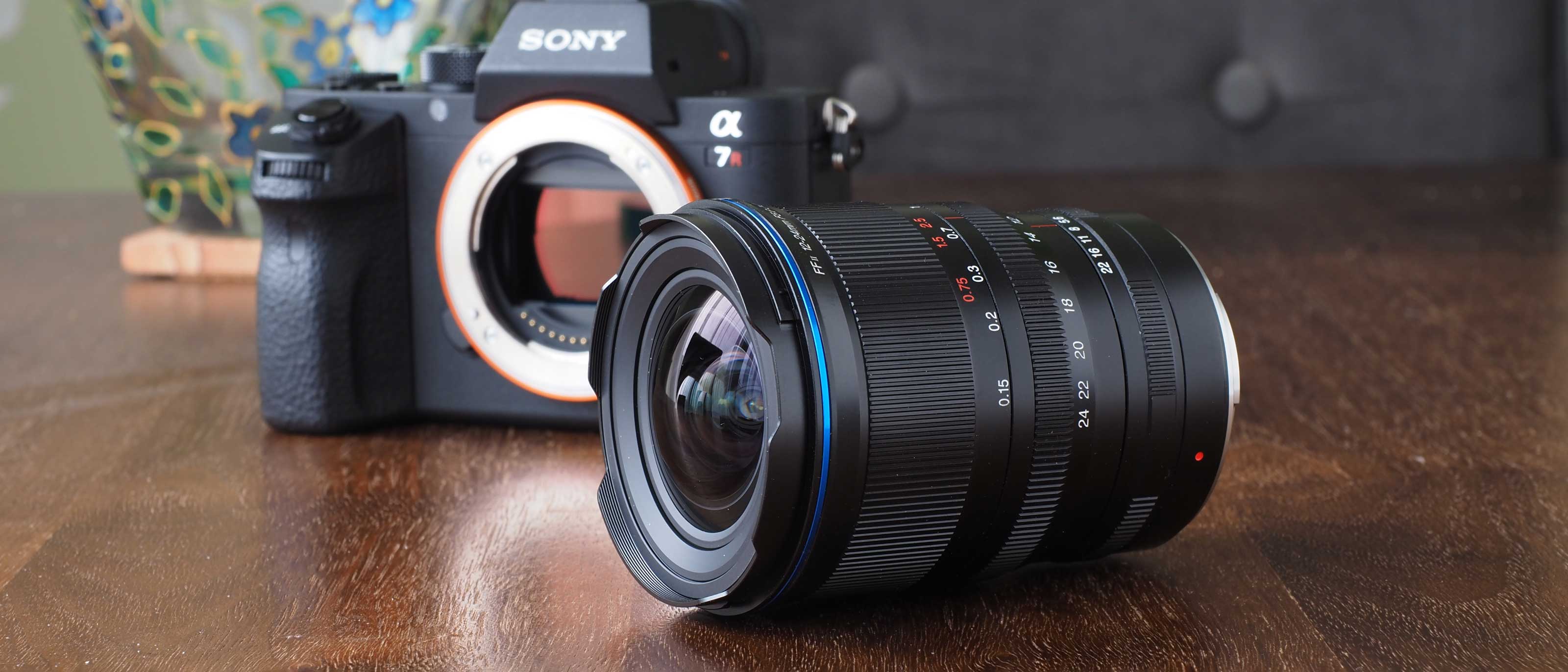Digital Camera World Verdict
It’s definitely worth considering the Laowa 12-24mm f/5.6 as a low-cost full frame ultra-wide zoom – it’s a lot cheaper than anything from the camera makers themselves. But the f/5.6 maximum aperture is somewhat restrictive and doesn’t translate into smaller, lighter lens, either. The main thing though is its lackluster optical performance. It’s cheaper than its rivals, but hard to recommend wholeheartedly.
Pros
- +
Ultra-wide angle of view
- +
Excellent build and ‘feel’
- +
Value for money
Cons
- -
Restrictive f/5.6 maximum aperture
- -
Patchy optical performance
- -
Not especially small, considering
Why you can trust Digital Camera World
Full-frame ultra-wide-angle zooms are typically big, heavy and expensive. That last part – expense – is where the Laowa 12-24mm f/5.6 really scores. It’s half the price of its cheapest own-brand rivals, but boasts a distortion-free optical design that most modern lenses need digital correction profiles to achieve.
Its metal construction and solid, old-school feel will further increase its appeal, though only amongst photographers happy to use manual focusing. Like all Laowa lenses, there’s no AF. But then. that’s one of the reasons Laowa lenses can have the sometimes extravagant optical specs and low, low prices that have made the brand so successful.
Specifications
Format: Full Frame
Mount: Leica M / Sony E / Nikon Z / Canon RF
Focal length: 12-24mm
Max. Aperture: f/5.6
Angle of view: 84° – 121.9°
Lens structure: 15 elements in 11 groups, inc 2 aspherical elements, 3 ED elements
Aperture blades: 5
Min. focusing distance: 5.91″/15cm
Max. Magnification: 0.4x
Focus Mode: Manual (MF)
Filter thread: 77mm
Dimensions: About 69.4 x 84mm (depending on mount)
Weight: About 497g (with no hood or front/rear caps)
Key features
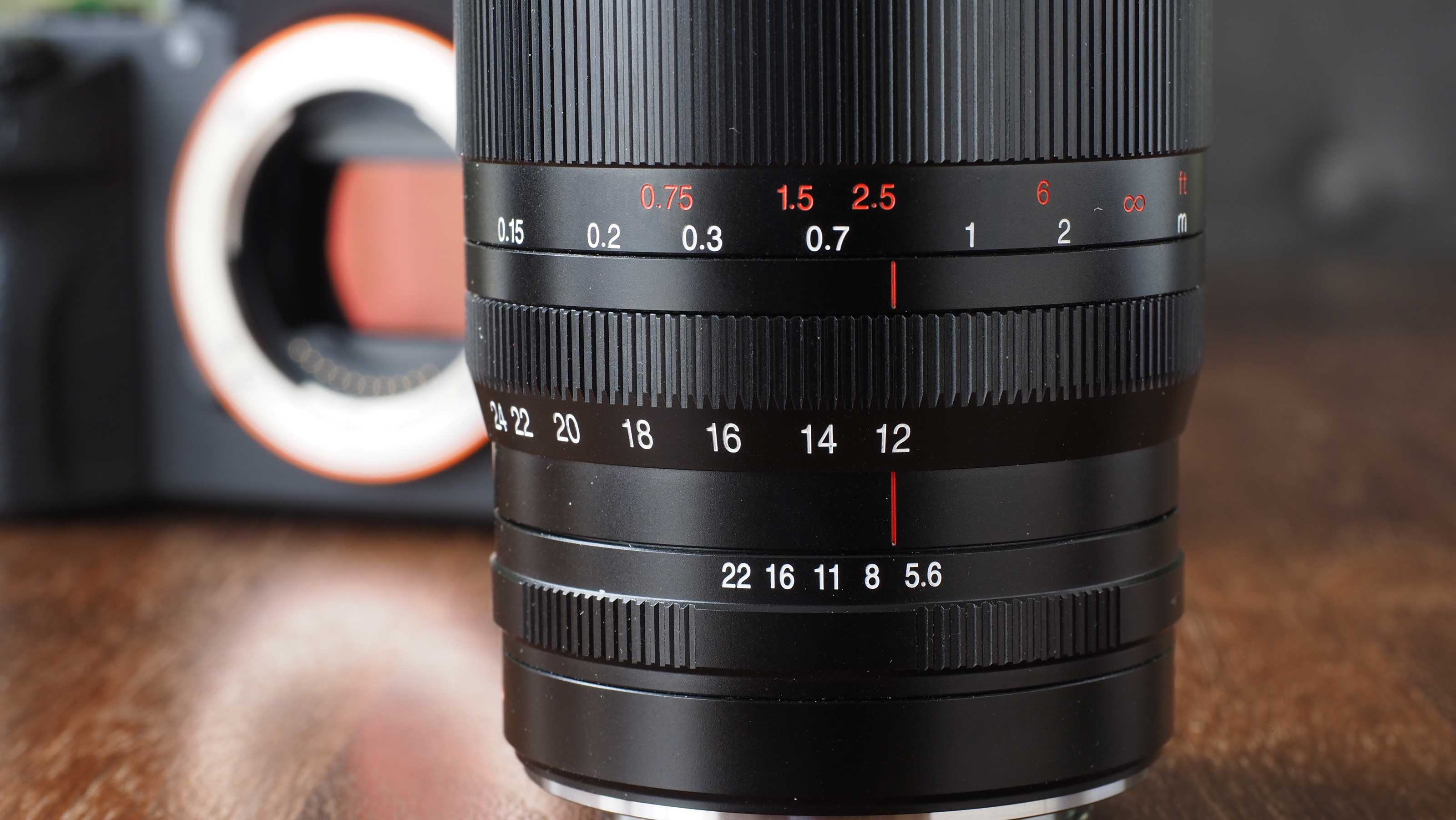
We’ve mentioned some of the key features of the Laowa 12-24mm f/5.6 already, so here’s a bit more detail.
First, there’s that f/5.6 maximum aperture. That’s a bit of a surprise given that most lenses in this range offer f/4, or even f/2.8 for pro versions. An f/5.6 maximum aperture is not necessarily an issue in itself, since lenses like these are often used at smaller apertures anyway.
There’s no image stabilizer either (Laowa doesn’t do stabilizers), and while the 15cm minimum focus distance lets you get quite close to your subjects, you’re not going to get especially strong background blur at f/5.6. Besides, with a 5-bladed diaphragm, this lens is hardly designed for bokeh.
On the positive side, the front lens element is only moderately convex, and it should be possible to attach regular or slimline filters to the 77mm filter ring – that’s unusual in a zoom this wide.
We tested the Laowa 12-24mm f/5.6 on a Sony body, but it’s a mirrorless lens also available in Nikon Z and Canon RF mounts, and also for Leica M cameras (you’ll need to use a clip-on viewfinder or live view).
Build and handling
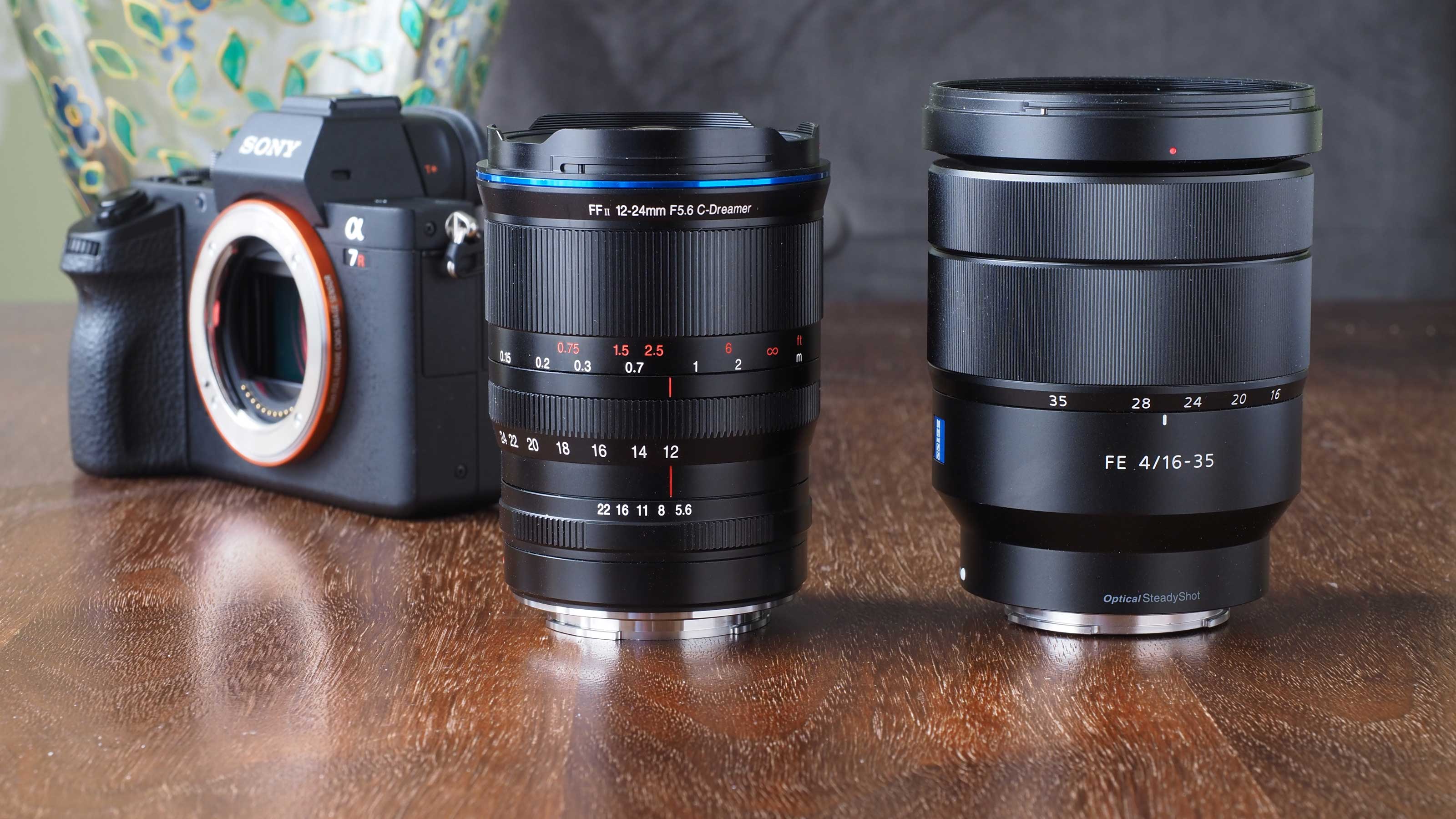
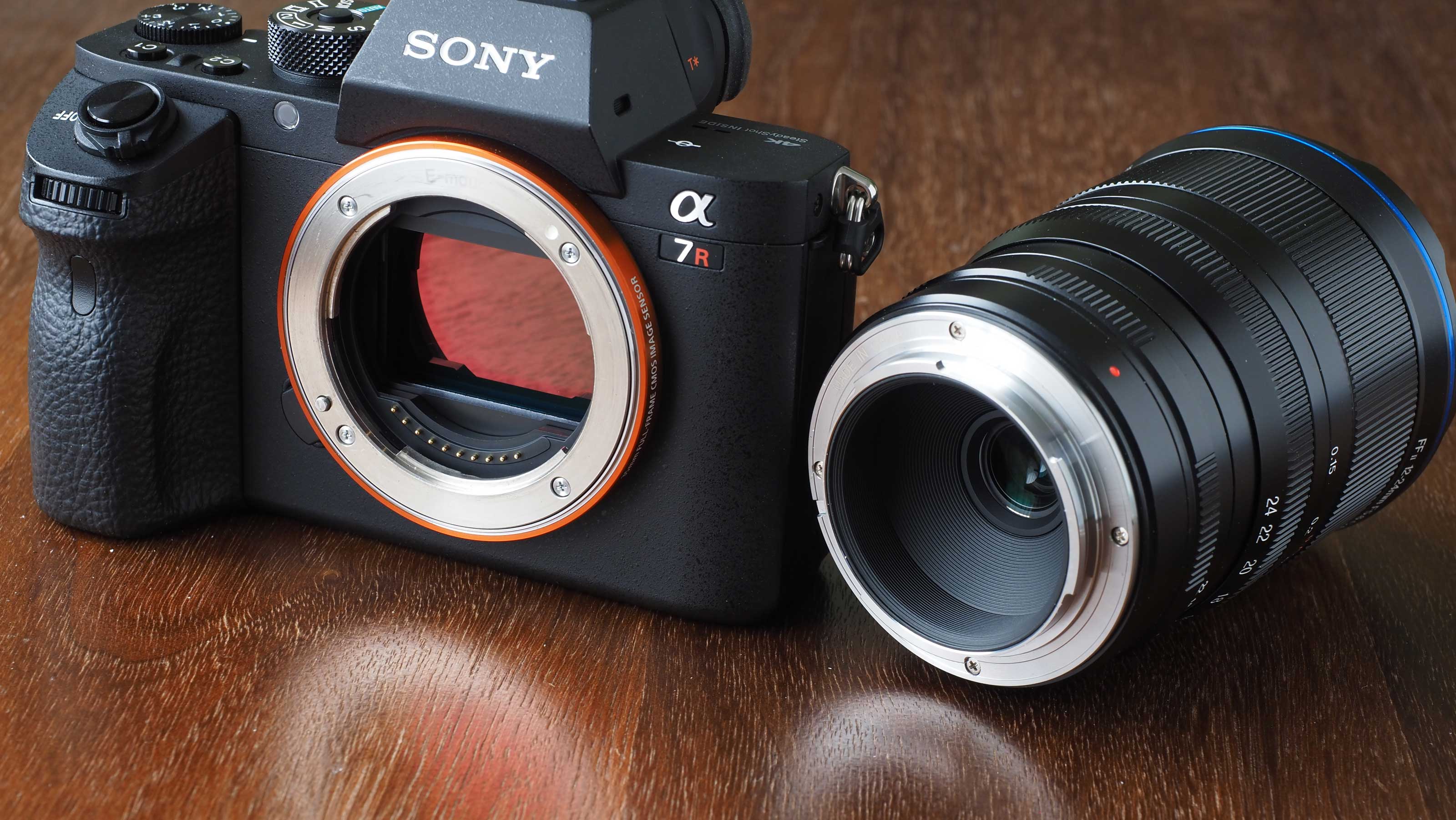
Despite its low price point (for a lens of this type) the Laowa 12-24mm f/5.6 feels a million dollars. Laowa lenses have that smooth, long-travel ‘mechanical’ feel of old-school lenses.
At just under 500g, this is no lightweight lens. Its combination of metal construction and serious glassware give it a dense, ‘quality’ feel. Nevertheless, it does feel a bit of a lump for a lens limited to f/5.6, and proved scarcely any smaller or more wieldy than our Zeiss 16-35mm f/4.
The aperture ring has a pretty small rotation, but then it only has to go from f/5.6 to f/22. The zoom ring works over wider radius, with markings for each 2mm focal length increment, which seems unnecessarily detailed, to be honest. The focus ring offers a long travel which allows for detailed distance markings – though because this is a zoom, there are no depth of field markings.
Performance
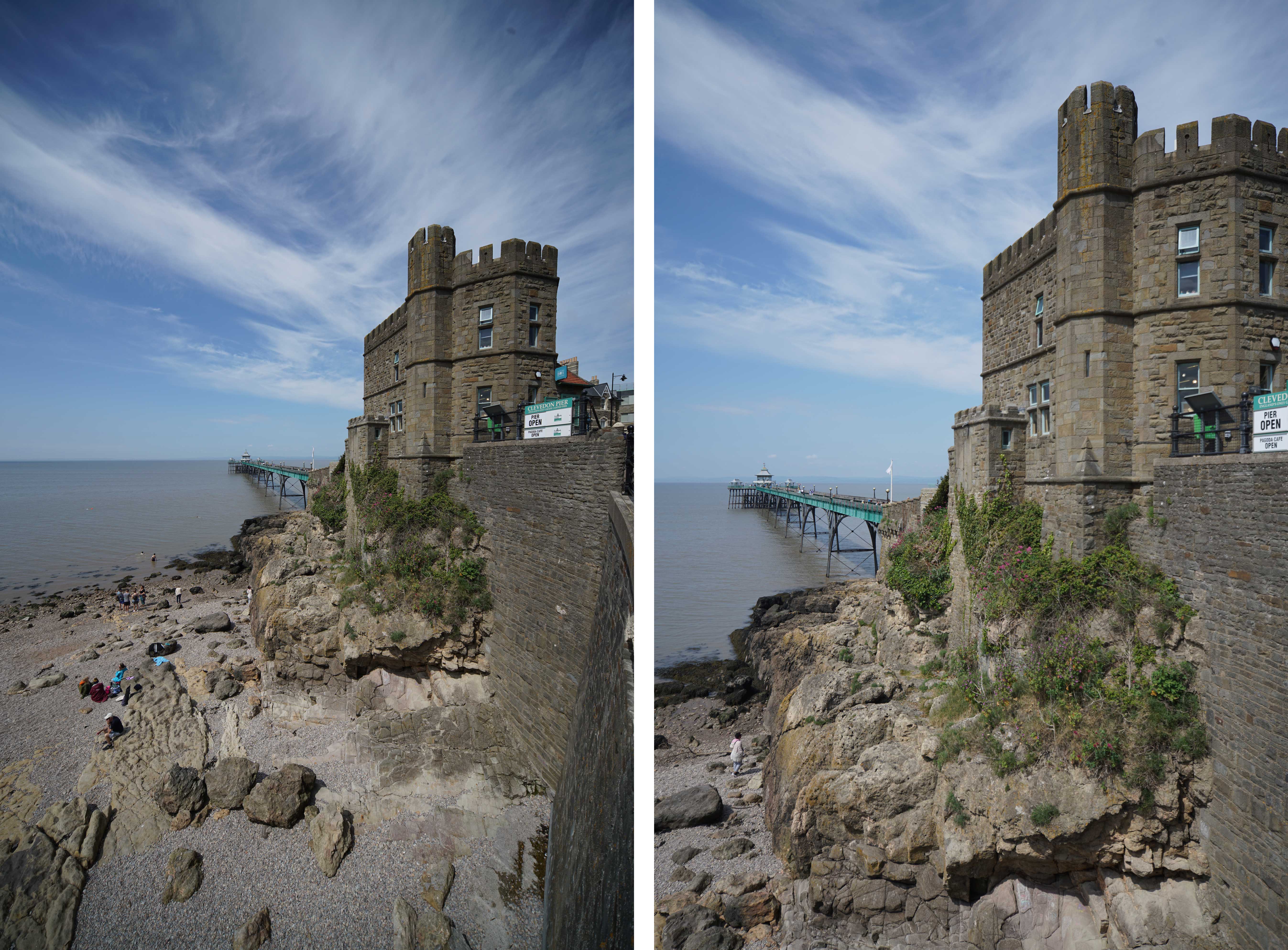
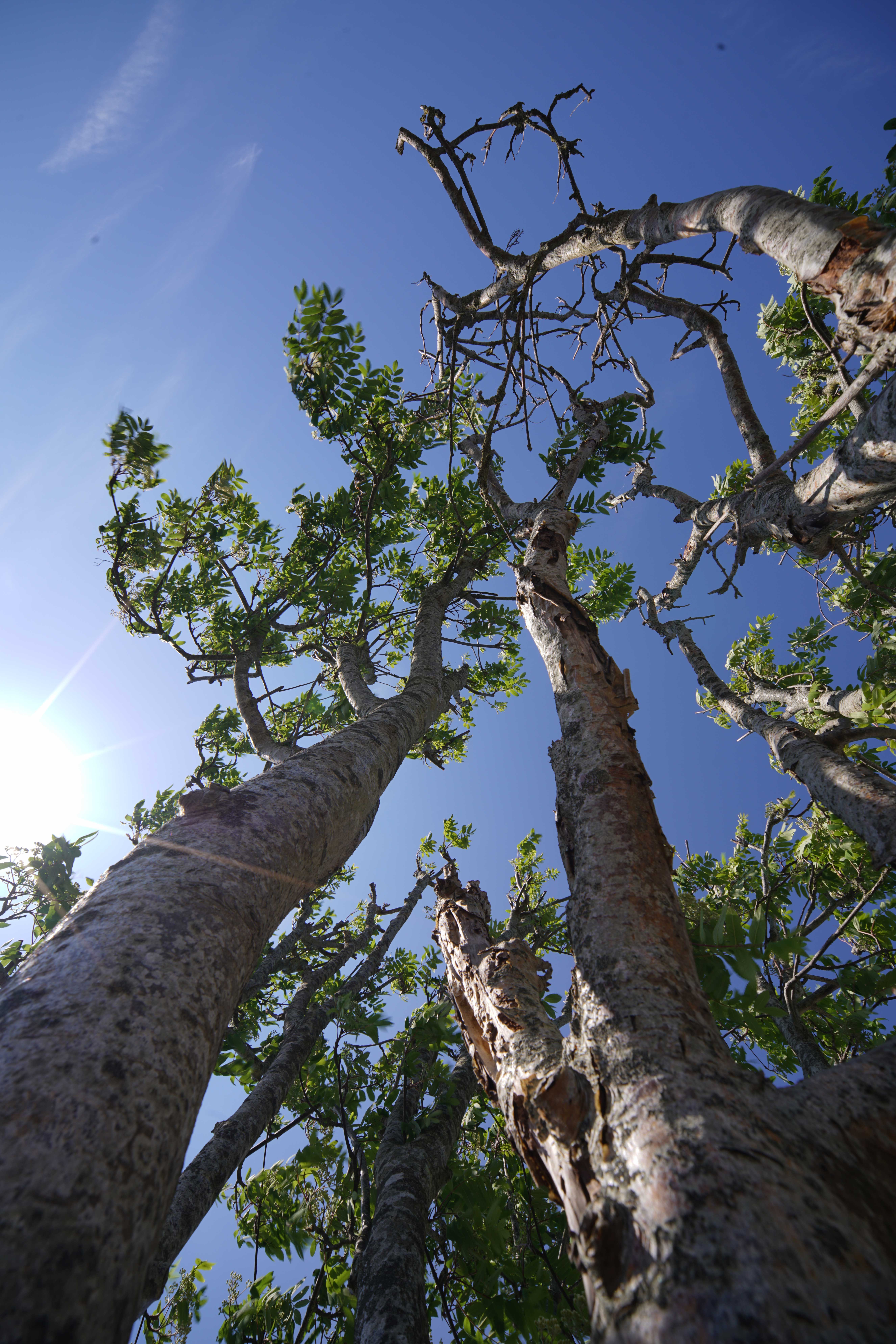
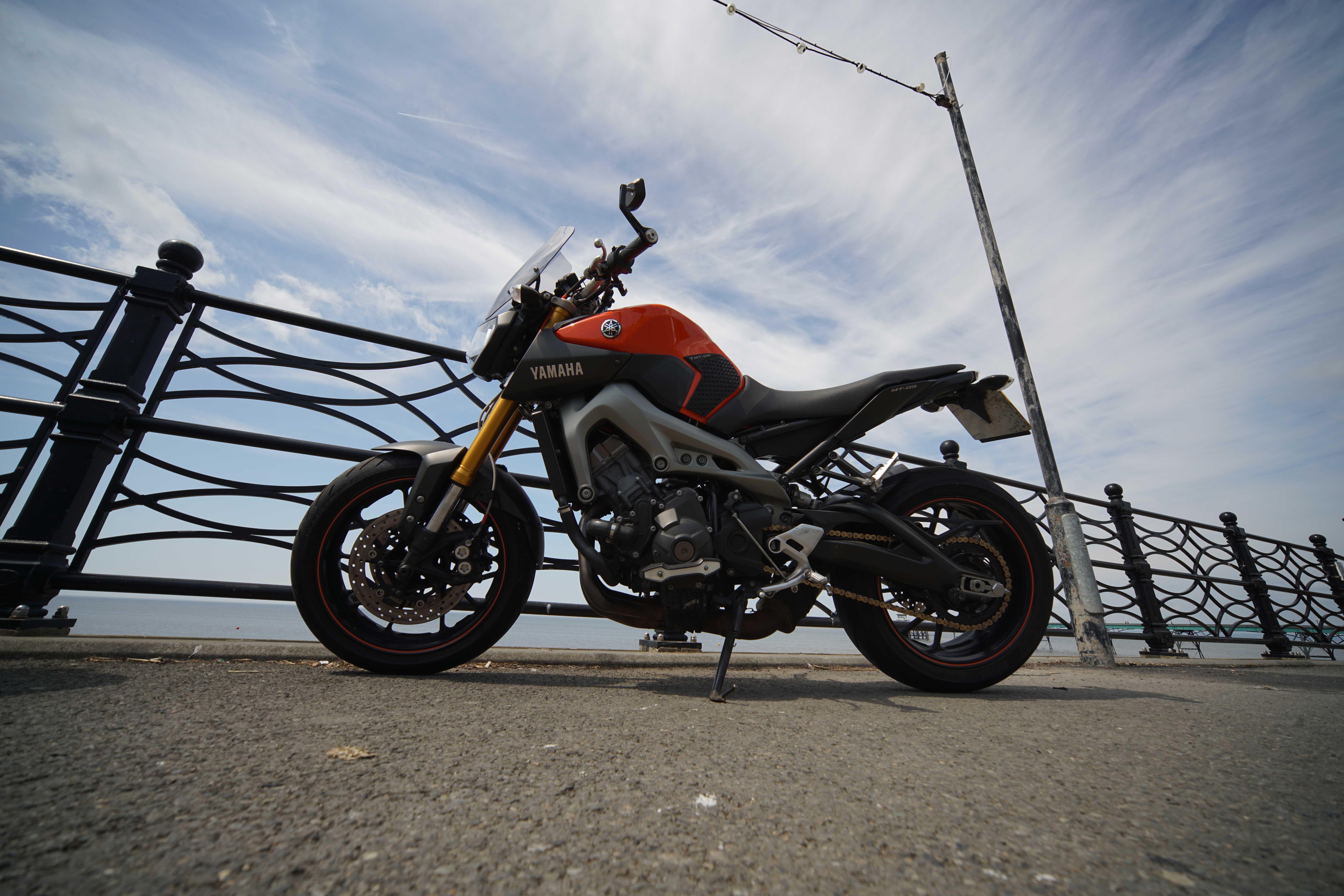

For all its promise, the Laowa 12-24mm f/5.6 proved somewhat disappointing in use. At f/5.6 there’s no much focus ‘snap’ in the viewfinder or on the camera’s rear screen, and focus peaking – never accurate at the best of times – proved even less useful at these wide angles of view and the smaller aperture.
It doesn’t help that the Laowa 12-24mm f/5.6 is a ‘dumb’ lens that does not communicate with the camera body, so it does not have a chip to tell the camera to display its magnified focus zoom setting. This will help you focus, but you will have to activate it manually on the camera.
Worst of all, the Laowa’s optical performance proved disappointing, to say the least. It was impressively distortion-free and crisp and clear at its widest settings, but the edge sharpness never came very close to the center sharpness, and in our real-world testing it looked quite sketchy at 24mm. Not soft, exactly, but not right either.
We mentioned as much to Laowa, who asked for the lens to be sent back for checking, so we’ll let you know if ours turned out to be faulty.
Lab tests
We run a range of lab tests under controlled conditions, using the Imatest Master testing suite. Photos of test charts are taken across the range of apertures and zooms (where available), then analyzed for sharpness, distortion and chromatic aberrations.
We use Imatest SFR (spatial frequency response) charts and analysis software to plot lens resolution at the center of the image frame, corners and mid-point distances, across the range of aperture settings and, with zoom lenses, at four different focal lengths. The tests also measure distortion and color fringing (chromatic aberration).
Sharpness:
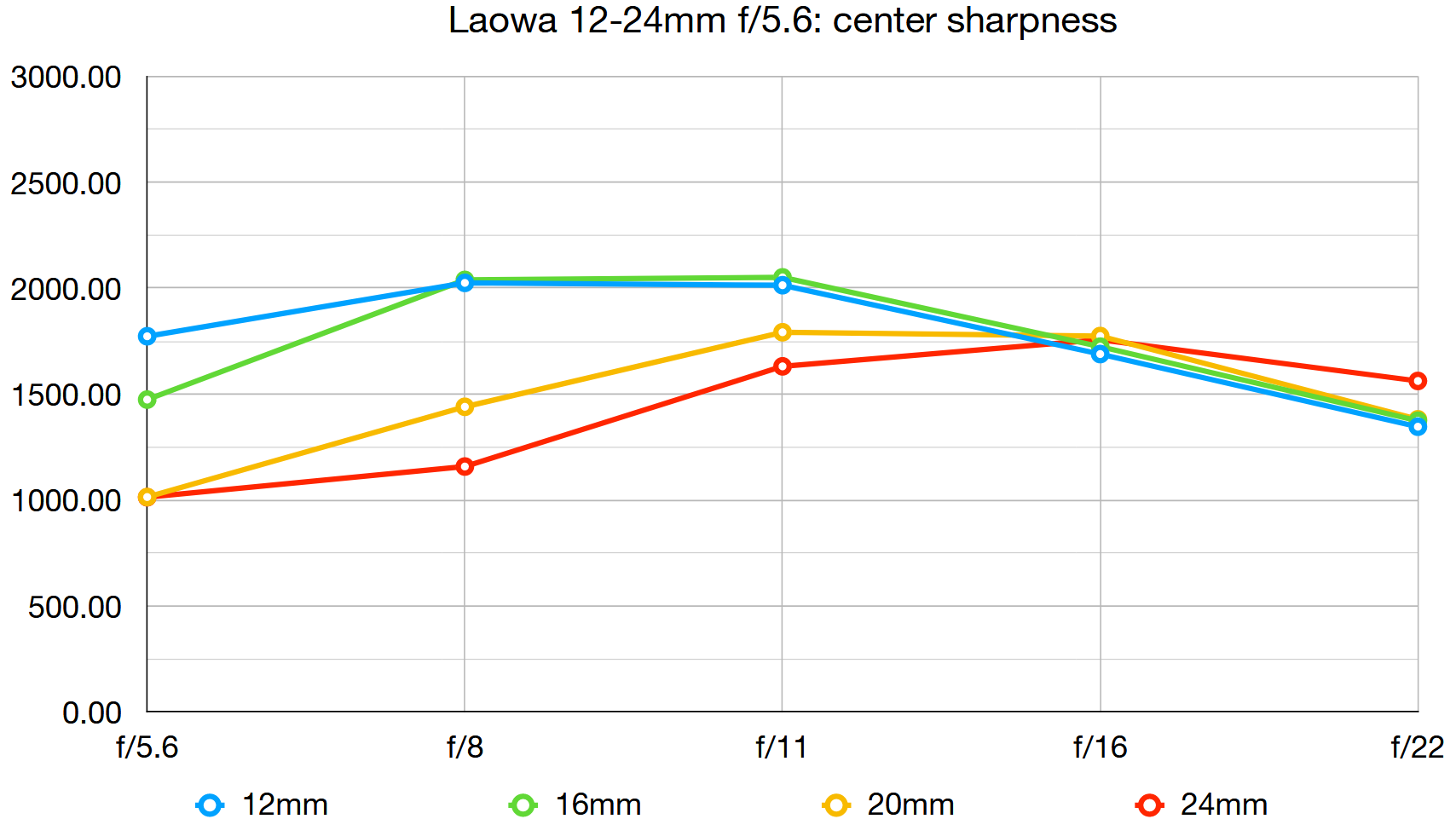
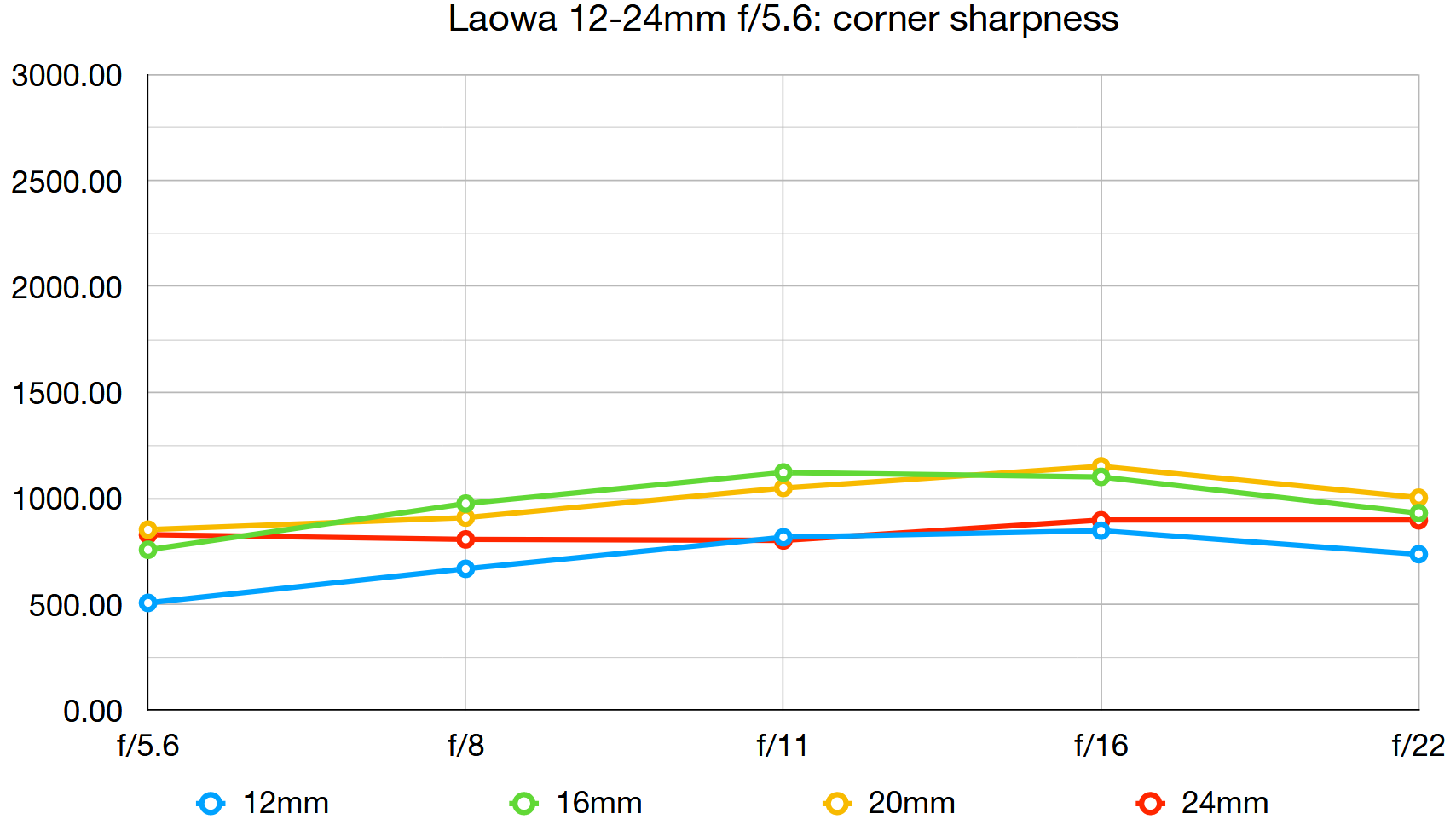
Center sharpness is excellent at shorter focal lengths, regardless of aperture. However, sharpness drops noticeably at 20mm and longer, requiring you to stop down to a slow f/16 to reach peak sharpness.
Corner sharpness is inevitably lower, due to the lens necessarily being positioned at such close range to our large, flat lens testing chart. However we'd expect a slightly better performance from a lens of this focal range, especially as the relatively slow f/5.6 maximum aperture enables a reasonably deep depth of field compared to most lenses of this focal range, which helps improve corner sharpness.
Fringing:
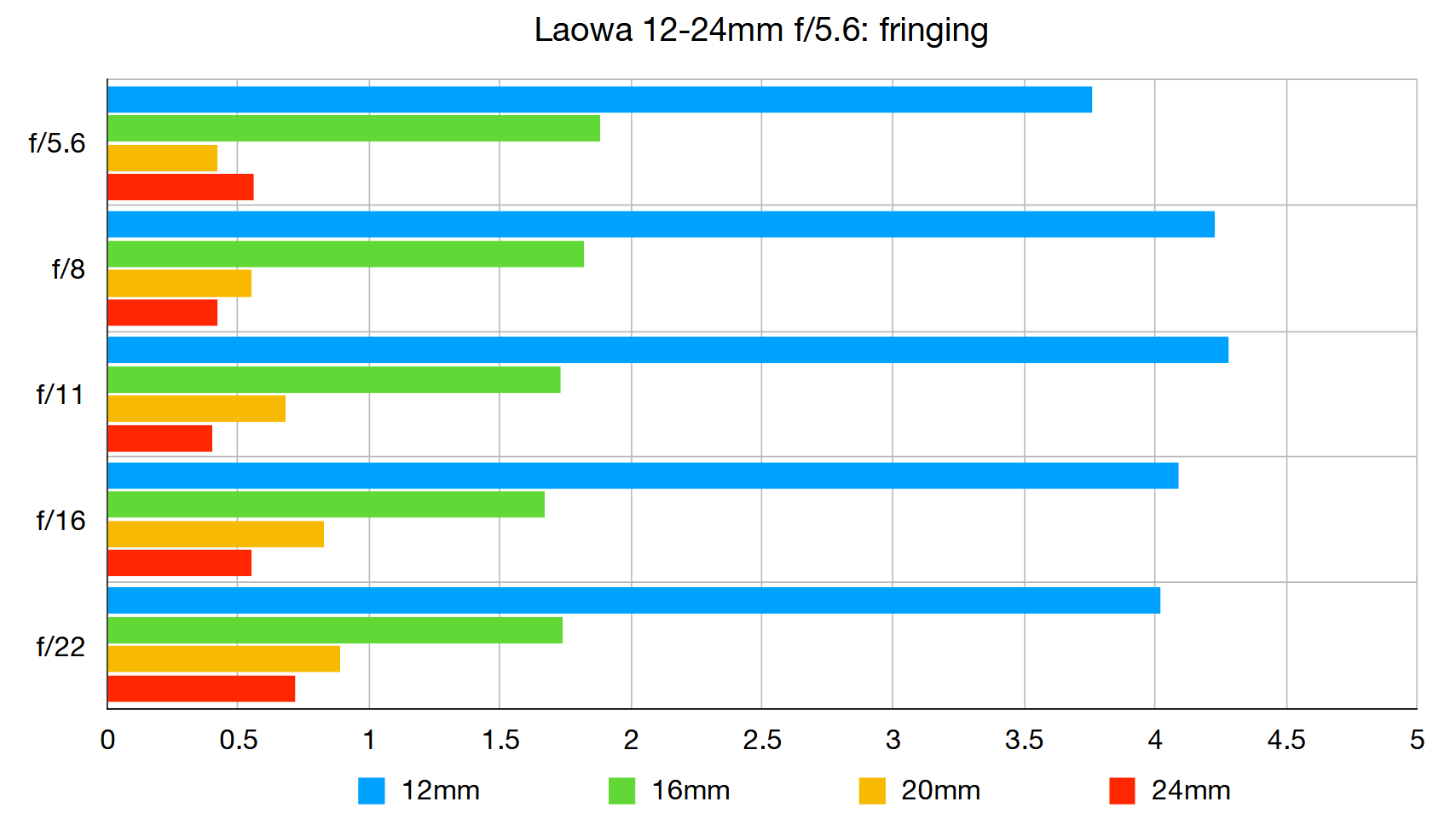
Color fringing is fairly severe at 12mm, though it drops quickly as you zoom in, reaching negligible levels by 24mm. However, this isn't the whole story. This chart shows fringing measured at the corners of frame, where it is usually most visible. But in the case of the Laowa 12-24mm, from 16-24mm fringing is most apparent in the mid-frame. At 16mm mid-frame fringing is around 3 (rather than 1.8 as shown in the chart above), at 20mm it's 2-3 depending on aperture, and at 24mm mid-frame fringing ranges from 1.24 to 2.5.
Distortion:
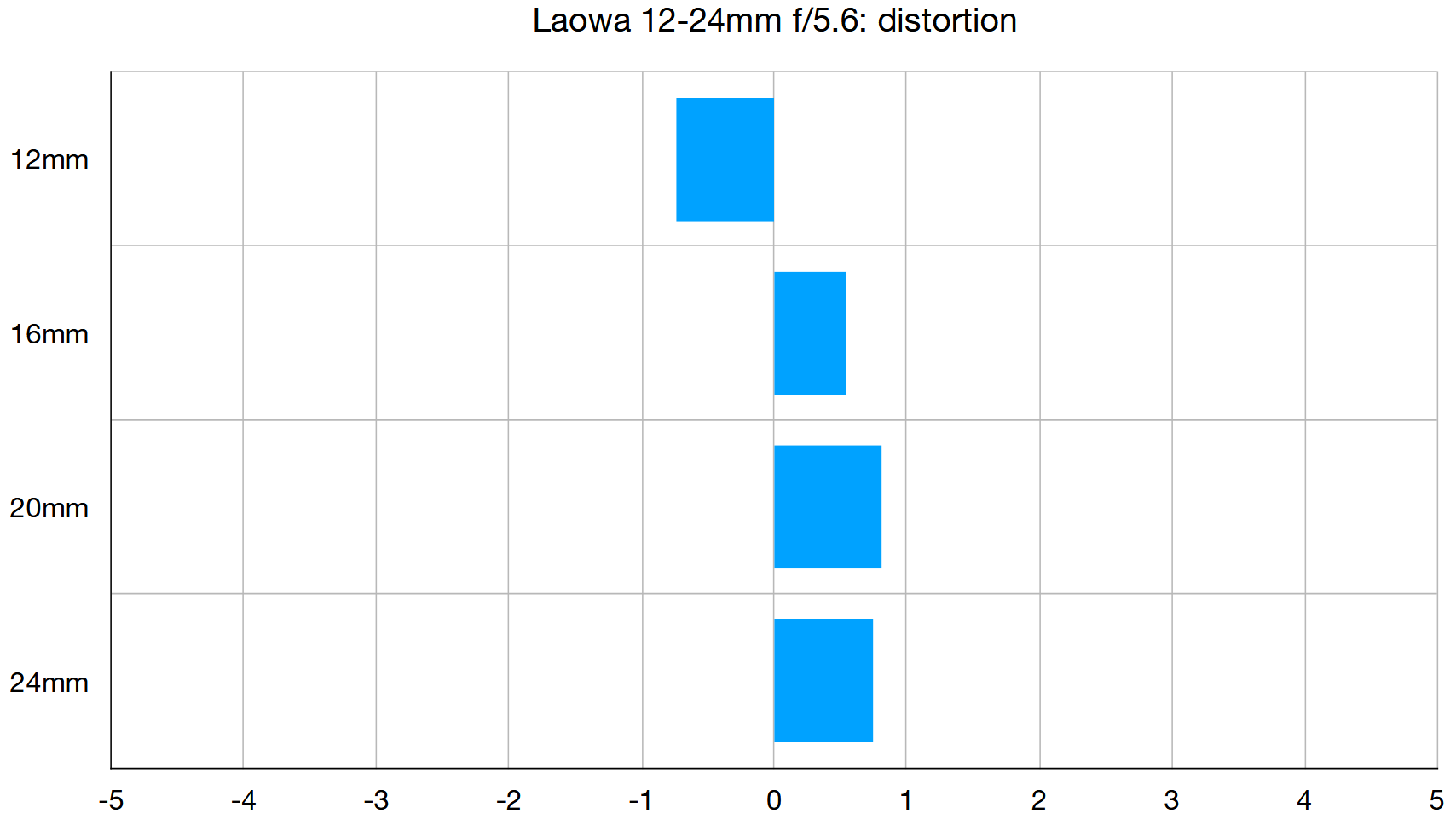
Distortion is impressively minimal for a wide-angle lens – it should go pretty much unnoticed in everyday shooting.
Verdict
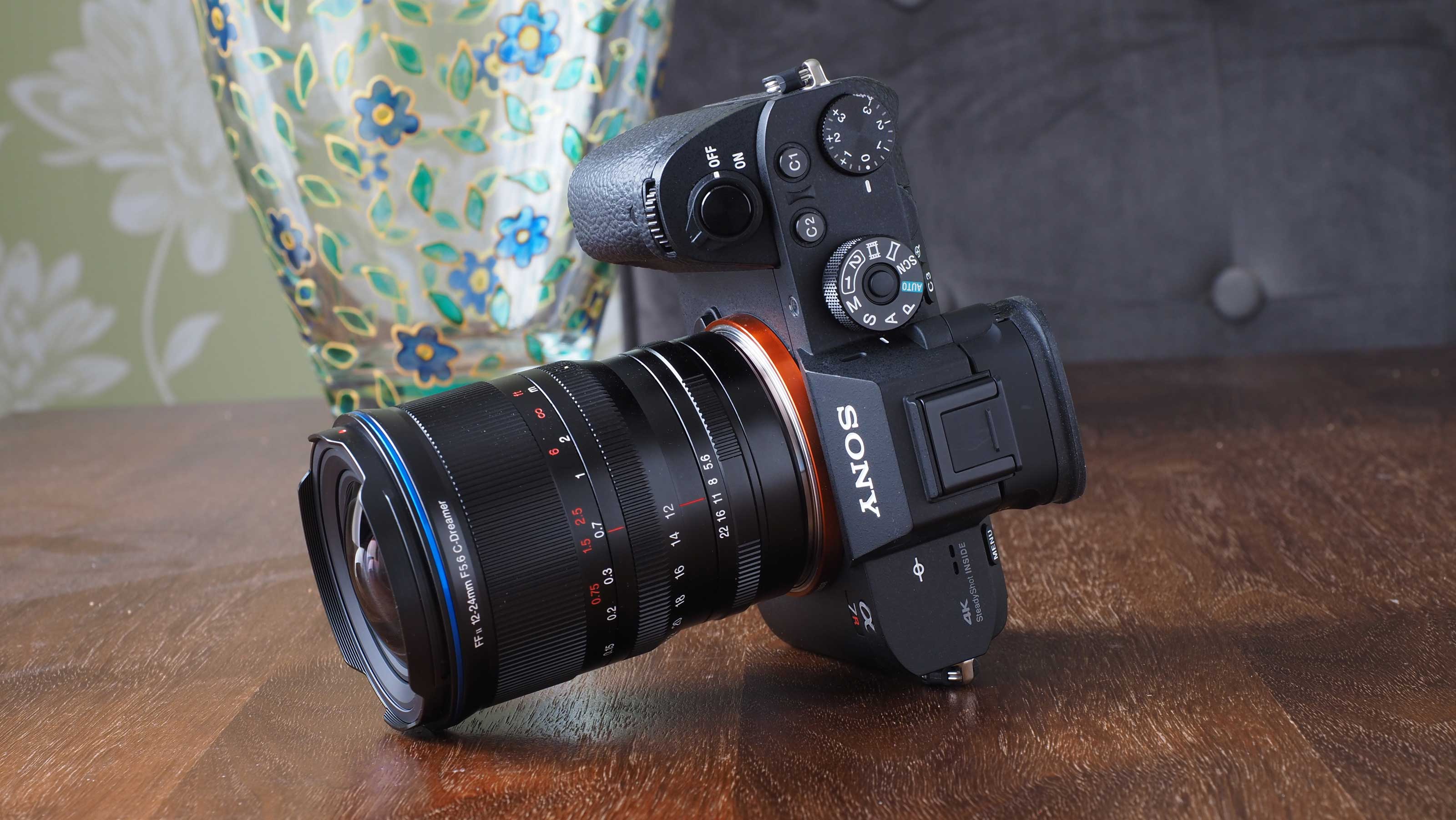
The Laowa 12-24mm f/5.6 looks great on paper, even if that f/5.6 maximum aperture does seem somewhat unambitious. Yet we were quite surprised at the size and weight of this lens. It’s not as big as rival ultra-wide AF lenses, but the smaller maximum aperture doesn’t seem to bring any significant benefit in size.
The optical performance of our sample was disappointing too. It lost performance at the 24mm end of the zoom range and never got completely sharp at the edges. We’d hoped the modest f/5.6 aperture would mean better performance with fewer optical compromises, but that didn’t seem to happen either.
This is still a great lens at the price, but while it feels beautiful to use, the results don’t really stack up against those from more mainstream (and more expensive) rivals. The specs and the performance are a little disappointing compared to what we usually get from Laowa.
Read more:
• Best wide-angle lenses
• Best Sony wide-angle lenses
• Best lenses to get
• Best full frame cameras
• Best mirrorless cameras
• Best Canon RF lenses
• Best Nikon Z lenses

Rod is an independent photography journalist and editor, and a long-standing Digital Camera World contributor, having previously worked as DCW's Group Reviews editor. Before that he has been technique editor on N-Photo, Head of Testing for the photography division and Camera Channel editor on TechRadar, as well as contributing to many other publications. He has been writing about photography technique, photo editing and digital cameras since they first appeared, and before that began his career writing about film photography. He has used and reviewed practically every interchangeable lens camera launched in the past 20 years, from entry-level DSLRs to medium format cameras, together with lenses, tripods, gimbals, light meters, camera bags and more. Rod has his own camera gear blog at fotovolo.com but also writes about photo-editing applications and techniques at lifeafterphotoshop.com
